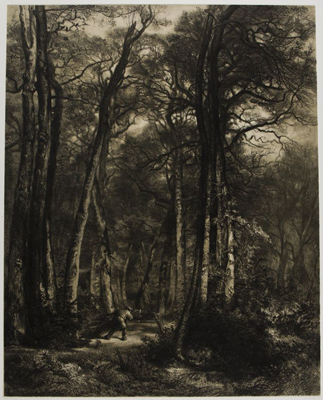In a recent gallery talk, curator Elizabeth Rudy drew attention to a French print from about 1794. Part of a recent rotation in the rococo and neoclassicism gallery, it depicts a young boy and his mother looking into an optical viewer.
While the work is compelling in its own right, background details add even more intrigue, explained Rudy, the Carl A. Weyerhaeuser Associate Curator of Prints. The work looks like one of J. F. Cazenave’s most famous prints, which reproduces a genre painting by Louis-Léopold Boilly that was shown at the Salon of 1793. Though it has the same structure and a similar color scheme to that well-known work, this version by an unknown artist is smaller and in reverse of the original.
“This was a wonderful discovery that came about in the process of putting together this group of prints for display. I love that this happened,” Rudy said, because it helped show that there was not only a market for colored prints in 18th-century France, but there was also a market for colored prints of colored prints. These works, after all, represented a popular new technology at the time—namely, a way to reproduce paintings and drawings in color. Examples of those types of paintings filled the other three walls of the gallery surrounding Rudy’s audience.
The talk was one in a series of short monthly discussions this winter and spring that focus on prints on view in the galleries. Rudy’s aim is to introduce visitors to the museums’ formidable prints collection, which is one of the oldest in the United States. It is also among the group of objects on which the Fogg Museum was founded, thanks to 19th-century art collector and Harvard alumnus Francis Calley Gray. “It’s a tremendous collection with incredible depth,” Rudy said.
The talks have been bringing attention to how rotations enliven and complicate arguments being posed by other objects in the galleries. The galleries’ themes “shift and turn in really interesting ways when we make these rotations,” Rudy said. “I think it’s important to share that with our audiences.”
In her talks, Rudy offers insights into various techniques and approaches to printmaking. She also highlights major artists and artists’ influences on prints; her first gallery talk, for instance, focused on Dutch prints after Rubens.
Next month’s talk, on May 2, will focus on Barbizon School artists’ contributions to printmaking, and in the future Rudy hopes to give talks about rotations whose themes cut across multiple galleries. Keep an eye on our calendar for details on the individual talks.




